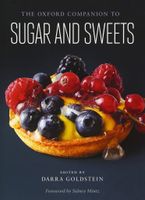Advertisement
Pancakes Large and Small
Appears in
Published 2015
Two key features distinguish pancakes from other starch-based staples. The first is that liquid batter (at times very thick) is used, in contrast to the firm dough required for shaping bread. The second is that gluten is not required for successful formation—indeed, gluten is not generally desirable, as pancakes are intended to be soft, not stiff—which means that a much greater range of grains can be used.
Flour or meal made from true cereal grasses, such as wheat, oats, barley, rye, maize, and rice, collectively form the base of most pancakes eaten around the world. The grain-like seeds of plants that are not technically grasses, such as buckwheat (related to rhubarb) and amaranth (related to pigweed), and starches derived from many other seeds and plants, such as pulses (peas, beans, lentils), potato, cassava (tapioca flour), and chestnuts, may also be used. This enormous flexibility in the basic ingredient has led to pancakes being a truly global food—one that has crossed the East–West culinary divide in a way that bread has not.


